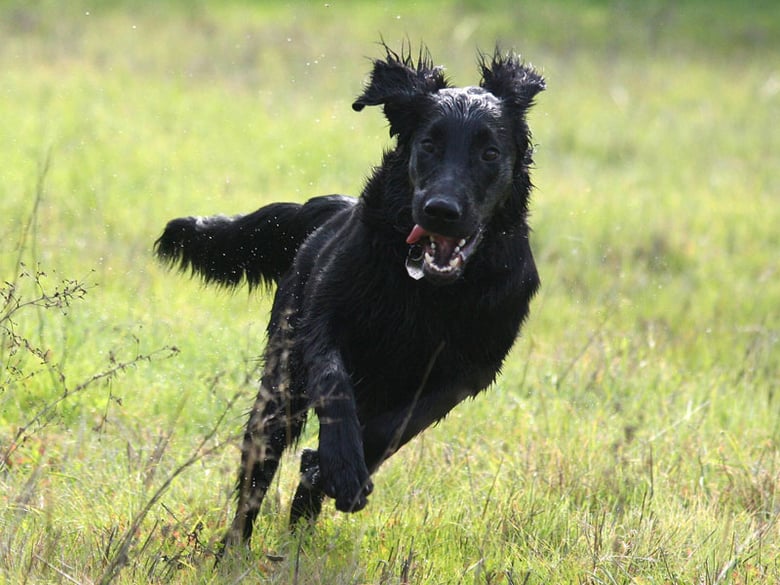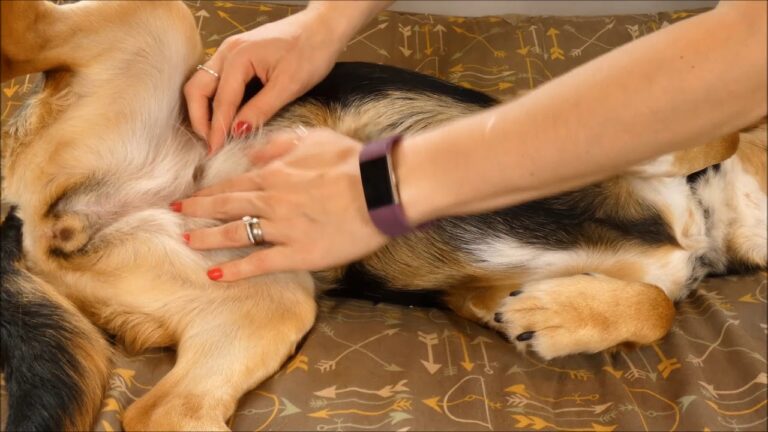One of the most exciting moments for dog owners is the anticipation of puppies entering their lives. But when does a pregnant dog start showing? Understanding the signs of pregnancy in canines is essential for providing proper care and preparation. Typically, a pregnant dog will start showing signs of pregnancy around the 3 to 4-week mark. However, the physical changes may vary depending on the breed and size of the dog. Being able to recognize these early signs such as weight gain, changes in appetite, and behaviors can help you provide the best support and care for your pregnant furry friend. Let’s delve into the various indicators that reveal a dog’s pregnancy journey.
Introduction: Understanding Canine Pregnancy
Canine pregnancy is a crucial phase in a dog’s life cycle. It is essential for dog owners to be aware of the signs and symptoms to ensure proper care and support for the pregnant dog.
Stages of Canine Pregnancy
During pregnancy, a dog goes through several distinct stages, including fertilization, implantation, gestation, and finally, parturition. Each stage is critical for the health and well-being of both the mother and the puppies.
Dogs usually have a gestation period of around 63 days, but this can vary slightly depending on the breed and individual dog.
Signs of Pregnancy in Dogs
Detecting pregnancy in dogs can be challenging, especially in the early stages. Common signs include changes in appetite, behavior, weight gain, and nesting behavior.
- Changes in appetite: Pregnant dogs may experience fluctuations in appetite, ranging from increased hunger to morning sickness-like symptoms.
- Behavioral changes: Some dogs may exhibit mood swings, clinginess, or even aggression during pregnancy.
- Weight gain: A noticeable increase in body weight is a clear indicator of pregnancy in dogs.

Signs of Mating and Conception
During the mating process, it’s crucial to be aware of certain signs that indicate a successful mating and conception when answering the question, “when does a pregnant dog start showing?”
Physical Signs
One of the primary physical signs of successful mating includes swollen vulva, which can be observed shortly after mating.
Additionally, a decrease in appetite and activity level might be noticeable, indicating hormonal changes post-conception.
Behavioral Changes
Behavioral changes, such as increased affection towards the owner or restlessness, can also be early indicators of a successful mating.
- Increased territorial behavior
- Seeking seclusion

Early Changes in a Pregnant Dog
During the early stages of pregnancy in dogs, there are subtle signs that may indicate the presence of developing puppies. These signs can start showing as early as three weeks into the pregnancy.
Increased Appetite
Pregnant dogs may exhibit an increased appetite as their bodies require more nutrients to support the growing puppies. This change is noticeable within the first few weeks of gestation.
Behavioral Changes
Some pregnant dogs may display behavioral changes such as restlessness or nesting behaviors. These changes can indicate that the dog is preparing for the arrival of her puppies.
Physical Signs of Pregnancy in Canines
During pregnancy, dogs exhibit various physical signs that indicate they are expecting puppies.
Changes in Appetite
One of the initial signs is a change in appetite. Pregnant dogs may experience increased hunger or feeding aversion.
This can usually be noticed around 21-28 days after conception when does a pregnant dog start showing.
Abdominal Enlargement
As the pregnancy progresses, the abdomen of the dog will start to enlarge due to the growing puppies.
This becomes more evident after around 45 days of gestation, when the dog’s belly becomes visibly swollen.
Behavioral Changes in Pregnant Dogs
During pregnancy, dogs exhibit several behavioral changes that may indicate they are expecting. These changes can vary from dog to dog, but some common signs include:
Increased Restlessness
Pregnant dogs may display increased restlessness as their bodies undergo hormonal changes. They might pace more than usual or have difficulty settling down.
Additionally, when does a pregnant dog start showing signs of restlessness can vary, but it typically occurs in the latter stages of pregnancy.
Changes in Appetite
Another common behavioral change in pregnant dogs is alterations in their appetite. Some dogs may experience a decrease in appetite, while others may have an increased hunger.
This change can begin during the early stages of pregnancy and may continue throughout the gestation period.
Dietary Considerations During Canine Pregnancy
Proper nutrition is crucial for the health of a pregnant dog and her developing puppies. During pregnancy, it is essential to provide a well-balanced diet that meets the specific needs of the mother and supports the growth of the fetuses.
Importance of High-Quality Food
Choose a high-quality dog food that is formulated for pregnant or lactating dogs. Look for options that are rich in essential nutrients such as protein, calcium, and folic acid to support the overall health of the mother and the proper development of the puppies.
Ensuring the mother receives adequate nutrition will also contribute to the health and strength of the puppies after birth.
Frequency of Feeding
During pregnancy, it is recommended to feed the pregnant dog multiple small meals throughout the day to prevent stomach upset and to accommodate her changing nutritional needs.
Consult with your veterinarian to determine the appropriate feeding schedule and portion sizes based on the size and breed of your dog.
Preparing for Whelping: Getting Ready for Puppies
When does a pregnant dog start showing signs of pregnancy? It’s vital to prepare for whelping once you confirm your dog is expecting. Start by creating a cozy whelping box in a quiet area.
Gather Necessary Supplies
Stock up on essentials such as clean towels, heating pads, a thermometer, puppy formula, and a scale to monitor the puppies’ weight.
Additionally, having a trusted vet’s contact is crucial to seek guidance during the whelping process.
Create a Whelping Plan
Plan for emergencies by researching nearby veterinary clinics that offer 24/7 services and understanding the signs of complications during birth.
- Prepare a birth timetable based on your dog’s gestation period,
- Set up a communication plan with your vet, and
- Ensure you have a quiet, stress-free environment for the mother and puppies.
Healthcare and Monitoring During Canine Pregnancy
Proper healthcare and monitoring are crucial during a dog’s pregnancy. It is essential to provide the expectant mother with the necessary care to ensure a smooth pregnancy and delivery.
Regular Veterinary Check-ups
It is recommended to schedule regular check-ups with a veterinarian throughout the dog’s pregnancy. These visits help monitor the mother’s health and the growing puppies.
During these check-ups, the vet may perform ultrasounds and other diagnostic tests to ensure the puppies’ development is on track and to address any potential health concerns early on.
Diet and Nutrition
Ensuring the pregnant dog receives a well-balanced diet is vital for her health and the development of the puppies. A diet rich in nutrients, vitamins, and minerals is essential.
- Include supplements recommended by the vet.
- Avoid feeding foods that may be harmful to pregnant dogs.
- Monitor weight gain to prevent obesity, which can have negative effects on the pregnancy.
FAQs About Canine Pregnancy
As a dog owner, it’s important to be aware of the signs and symptoms of pregnancy in your canine companion. Understanding the gestation period and common questions can help you provide the best care for your pregnant dog.
1. When Does a Pregnant Dog Start Showing?
Most dogs start showing visible signs of pregnancy around the 3 to 4-week mark. This is when you may notice changes in her appetite, behavior, and overall appearance.
It’s crucial to consult your veterinarian to confirm the pregnancy and discuss prenatal care options such as diet adjustments and exercise.
2. How Long is the Gestation Period for Dogs?
The gestation period for dogs typically lasts around 63 days from the time of conception. Monitoring your dog’s progress and preparing for whelping (birth) is essential during this time.
- Ensure your dog has a comfortable and quiet space for whelping.
- Provide necessary supplies like clean towels, a whelping box, and a heating pad.
- Keep in touch with your vet for regular check-ups during the pregnancy.
Frequently Asked Questions
- At what stage of pregnancy do most dogs start showing signs?
- Most dogs start showing signs of pregnancy around the 21st day, but it can vary depending on the dog.
- What are some common signs that indicate a dog is pregnant?
- Common signs of pregnancy in dogs include increased appetite, weight gain, enlarged and tender nipples, lethargy, and nesting behaviors.
- Can a veterinarian confirm if a dog is pregnant before she starts showing signs?
- Yes, a veterinarian can confirm pregnancy in a dog before she starts showing visible signs through methods like ultrasound, palpation, or hormone testing.
- How long is the gestation period for dogs?
- The average gestation period for dogs is around 63 days, but it can range from 58 to 68 days.
- Should pregnant dogs receive any special care or diet?
- Pregnant dogs should receive special care, including regular vet check-ups, a balanced diet formulated for pregnant dogs, and a comfortable and stress-free environment.
Final Thoughts: Understanding When a Pregnant Dog Starts Showing Signs
In conclusion, knowing when a pregnant dog starts showing signs is crucial for responsible pet ownership. Generally, around 3 to 4 weeks into pregnancy, subtle changes like increased appetite, weight gain, and nipple enlargement may become noticeable. By the 5th week, the abdomen may start expanding, indicating a more obvious pregnancy. As pet owners, being observant and attentive to these signs can ensure proper care and preparation for the arrival of the puppies.
Remember, every dog is unique, and symptoms may vary. Consult your veterinarian for accurate diagnosis and guidance throughout your dog’s pregnancy journey. By staying informed and proactive, you can provide the best possible care for your pregnant canine companion.



